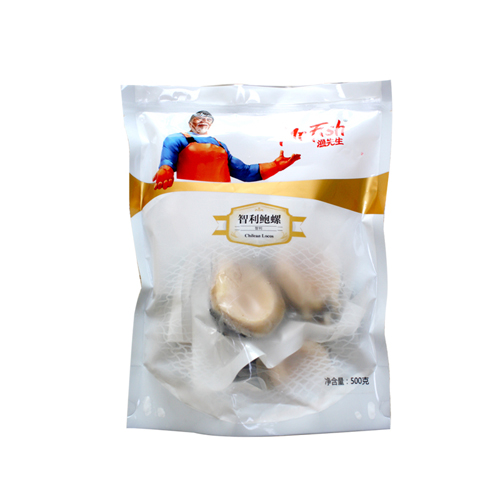1, natural wild, freehand diving fishing 2, living body processing, meat rich and full 3, shelling to dirty, rapid freezing and locking 4, soup sacred, original ecological Haizhen delicious
Place of origin :Chile(智利)
English name: Chilean Abalone(Locos)
Scientific name: Concholepas concholepas
Origin: Chile
Concholepas concholepas, the Chilean abalone, is a species of large edible sea snail, a marinegastropodmollusk. Despite the superficial resemblance, C. concholepas is not a true abalone (a species in the family Haliotidae), but a member of the family Muricidae, also known as murex snails or rock snails. This species is native to the coasts of Chile and Peru, where it is called loco (Chilean Spanish a loanword from Mapudungun[2]) or pata de burro and chanque (Peruvian Spanish).
Due to overfishing, the harvesting of this species in Chile has been limited by law since 1989.
C. concholepas has a thick, slightly oval, and white-brown to purple-grey shell. Its very few whorls makes it resemble a Phrygian cap in shape. The outer surface of the shell shows strong lamellose ribs of which are both radial and circular-concentric.
The shell is shaped almost like that of an abalone, with a very large aperture compared to other muricids. A loco cannot hide completely inside the shell if it is turned upside down, so has no need of its operculum; instead, it relies on its strong foot to remain in place. The shell is made of calcite with an inner layer of aragonite.[3]
The shells of this species are used as ashtrays in Chile.
